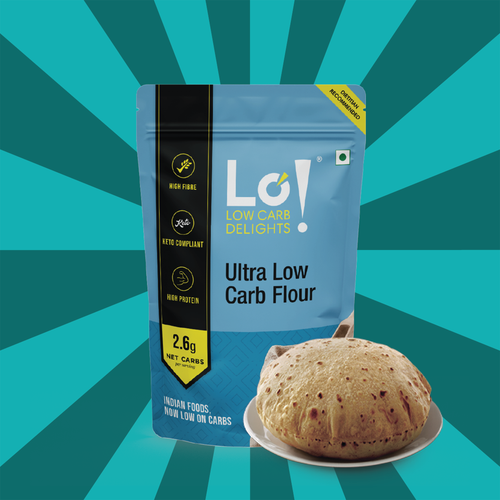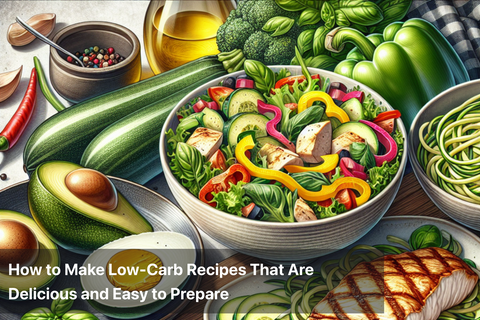
How to Overcome Common Challenges on a Low-Carb Diet
Adopting a low-carb diet can offer powerful benefits—weight loss, improved blood sugar control, and enhanced energy levels. However, the transition to a lower carbohydrate intake is not always smooth. As the body adjusts to new fuel sources and different eating habits, many people face physical, mental, and lifestyle-related hurdles.
Understanding these challenges and knowing how to manage them can make all the difference between short-term frustration and long-term success. A well-informed approach, combined with practical strategies, can help overcome roadblocks and make low-carb eating both sustainable and enjoyable.

Common Challenges and Their Causes
Shifting to a low-carb diet means changing the way the body processes energy. While this shift brings benefits over time, it can also result in some common short-term difficulties.
|
Challenge |
Primary Cause |
|---|---|
|
Low energy or fatigue |
Drop in glycogen stores and delayed fat adaptation |
|
Constipation |
Reduced intake of fiber or fluids |
|
Cravings for carbs/sugar |
Habitual dependence on glucose for energy or emotional eating |
|
Social or lifestyle pressure |
Lack of low-carb options when dining out or attending events |
|
Nutrient imbalances |
Missing key vitamins, electrolytes, or fiber due to limited food variety |
|
Plateaus in weight loss |
Slowed metabolism, calorie imbalances, or lack of meal variation |
Symptoms That Signal Adjustment Issues
When transitioning to a low-carb diet, the body often shows signs of adaptation. These symptoms are generally temporary but can be discouraging without the right guidance.
-
Headaches or brain fog
-
Muscle cramps or weakness
-
Sugar cravings
-
Dry mouth or increased thirst
-
Irritability or mood swings
-
Digestive changes (constipation or bloating)
-
Trouble sleeping or reduced stamina during workouts
These issues often reflect a combination of electrolyte loss, dehydration, or insufficient fat and fiber intake.
Tips to Overcome Low-Carb Transition Fatigue
Feeling tired during the first few days or weeks of a low-carb diet is common. This happens because the body is switching from using carbohydrates (glucose) to burning fat for energy—a process that takes time.
How to manage energy dips:
-
Increase healthy fat intake with foods like avocados, ghee, and nuts
-
Stay hydrated and add a pinch of sea salt to meals
-
Eat adequate protein to maintain energy and muscle function
-
Get 7–8 hours of sleep and reduce caffeine intake
-
Consider easing into low-carb gradually instead of overnight
These strategies help the body adapt smoothly to fat-burning mode.
Managing Digestive Discomfort on Low-Carb
A sudden reduction in carbs can lead to a decrease in fiber, which plays a major role in digestion. Constipation is one of the most common early side effects of going low-carb.
Tips to maintain digestive health:
-
Include high-fiber, low-carb vegetables like spinach, broccoli, zucchini, and bell peppers
-
Drink at least 2–3 liters of water per day
-
Add chia seeds, flaxseeds, or psyllium husk to smoothies or yogurt
-
Eat fermented foods like yogurt, kimchi, or pickles for gut-friendly probiotics
-
Don’t over-restrict carbs; keep moderate fiber-rich carbs in the plan if needed
Maintaining digestive balance helps you stay consistent and comfortable with your new eating habits.
Dealing with Cravings for Carbs and Sugar
Cravings are often a combination of habit, emotional triggers, and blood sugar fluctuations. They tend to be strongest in the early stages of the diet and fade as the body adapts.
How to reduce cravings:
-
Replace high-carb snacks with healthy fats and proteins (e.g., nuts, cheese, boiled eggs)
-
Eat balanced meals to avoid dips in blood sugar
-
Keep Lofoods low-carb snacks handy to stay on track during hunger spikes
-
Distract with physical activity, hydration, or a walk when a craving hits
-
Ensure you’re not undereating—caloric restriction can intensify cravings
Cravings become easier to manage once the body shifts to fat as its primary energy source.
Social and Lifestyle Adjustments
Social settings, eating out, and family meals can make it difficult to stay committed to a low-carb diet. However, with a little planning and communication, these situations can be handled smoothly.
Lifestyle-friendly strategies:
-
Check restaurant menus online and choose protein- and veggie-based options
-
Suggest potluck dishes that are low-carb friendly
-
Carry your own snacks when traveling or attending events
-
Involve family in low-carb meals by making dishes everyone can enjoy
-
Be open about your goals—most people are supportive when they understand your reasons
A flexible mindset helps you enjoy social occasions while still meeting your health goals.
Avoiding Nutritional Deficiencies
Cutting out carbs without adding variety can result in missing essential nutrients like magnesium, potassium, and certain B vitamins. These nutrients are vital for muscle function, energy, and heart health.
Precautions to maintain nutrient balance:
-
Eat a wide range of vegetables, nuts, seeds, and quality proteins
-
Use Lofoods low-carb options enriched with fiber and nutrients
-
Consider magnesium or potassium supplements if symptoms like cramps persist
-
Rotate ingredients to keep meals diverse and nutrient-rich
-
Don’t eliminate food groups unnecessarily—balance is key
A nutrient-dense low-carb plan is essential for long-term success and overall well-being.

Breaking Through Weight Loss Plateaus
Weight loss progress may slow down after initial rapid losses. This is common and doesn’t mean the diet isn’t working.
Strategies to overcome plateaus:
-
Reevaluate portion sizes and ensure calorie intake is aligned with goals
-
Add strength training or increase physical activity
-
Rotate food choices to prevent adaptation
-
Get enough sleep and manage stress—both impact fat loss
-
Track net carbs to ensure you're staying within your target range
Being patient and making small adjustments can reignite progress.
Summary
Starting and maintaining a low-carb diet comes with challenges, but each obstacle has a solution. Fatigue, cravings, digestive issues, and social pressures are common in the beginning—but with hydration, planning, food variety, and support, they become manageable. Listening to your body and making gradual adjustments can ease the transition and lead to long-term success.
Low-carb living is not about perfection—it’s about consistency, flexibility, and nourishment. With quality ingredients and supportive tools from Lofoods, maintaining a low-carb lifestyle becomes simpler, more delicious, and sustainable for real life.
This Blog post is an initiative by Lo! Foods, to provide accurate and Nutritionist / Doctor approved information related to Health. Lo! Foods is India's leading brand for Everyday Functional Foods. Foods designed for specific Health conditions or Needs. Lo! Foods also runs India's largest range of Low Carb Healthy Cloud Kitchens, under the brand names of Lo!, ProteinChef, ATH (All Things Healthy) and DiabeSmart.















Leave a comment
Your email address will not be published.